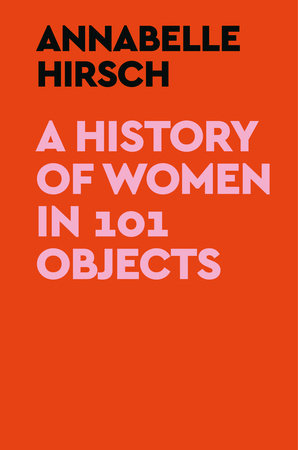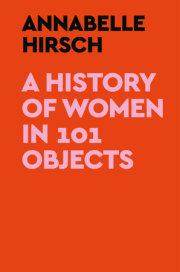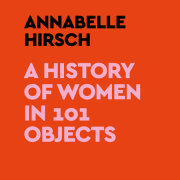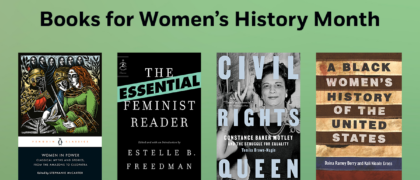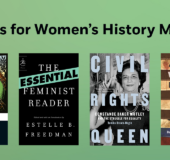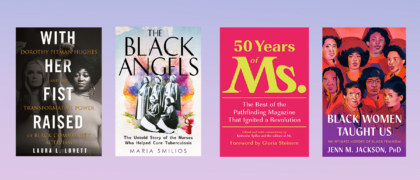Introduction
A couple of years ago, on a trip to the Danish coast, I visited the childhood home of the novelist Karen Blixen. To my own astonishment, I realized that I wasn’t so much fascinated by the place itself—the desk where she wrote, her paintings adorning the walls—but by what seemed an insignificant detail: a number of copper pans stacked up in a corner of the kitchen. I found myself trying to imagine that small, slender woman pottering around with them, how she might have felt, what she might have been thinking about. Did she even cook? Were those her pots, or had they belonged to her staff? What, I asked myself, did her kitchen utensils say about the author of
Babette’s Feast? Did they even say anything—about her, her everyday life, her existence as a woman, as a Danish woman, a European woman of that era? Pans and other such objects are the very opposite of monuments. They don’t commemorate revolutions or victories on the battlefield; don’t allude to great contracts or those moments of upheaval that have an undeniably transformative effect on society. It’s rarely possible to link them to one specific date, to say: “From that day on, everything was different.” They belong not to the so-called big picture of history but instead to a realm that is far more intimate. Quiet, and overlooked. A realm that was long considered female—and, accordingly, insignificant.
I hadn’t long embarked on my research for this book when I had an interesting experience. At a dinner party one evening, I started telling the table about the new project I had in mind: to narrate the history of women through objects. What would that look like, one of the women there asked curiously—what sorts of objects, for example? Before I could answer her question, before I’d even had the chance to explain that they would be objects that told the stories of women’s everyday lives, of big moments and small ones . . . objects linked to topics that have a bearing on women—the body, sex, love, work, art, politics—objects that bear witness to the movements women instigated, and to all the myths to which they’ve been forced to conform since time immemorial. That say something about how they dealt with that, how they fought, how they freed themselves, sometimes loudly, sometimes quietly. How they always found, or at least tried to find, a way to be themselves. That some of those objects would, of course, make reference to a particular woman and the influence she had—but not all of them. Because this wasn’t going to be a book about “the hundred coolest women in history” but a cabinet of curiosities showing how rich and diverse, how complex and nonlinear the history of all women is . . .
No, before I could say any of that, an elderly gent brayed loudly, “Women and objects? But women are objects!” A stupid line, crude and not at all funny. But, underneath, it does hint at something: at the fact that history has so often been narrated as though this comment were true. As though, for most of it, women really did have about as little influence or significance as a vase you’d put on display in the corner and occasionally fill with something (a baby). Even today, with inspirational women and their stories being pulled out of the swamp of oblivion, it can sometimes sound as though active, thinking, fighting, storytelling, tightrope-walking women are something quite new. As though—with a couple of notable exceptions—all those who came before us were asleep, mere onlookers. As though their story is largely one of passive victims.
None of that is true. None of that has ever been true. At least, not in the way we usually tell it. Women have always been there, and they have always contributed. The objects for which they were so often mistaken, and with which they shared their domains—the personal, and the public, too—bear witness to this. To this side of history that has so long been overlooked, so often ignored or dismissed as insignificant, irrelevant, trivial. These objects don’t reference drum-beating, big-picture history—at least, not always—but point instead to details and anecdotes, to things that gained in importance only over time and with great perseverance. They narrate the world in a different way. Some can be set within a larger context, some played a role at a very specific moment; some speak to a wider tendency, still others of one particular woman whose story I didn’t want to omit. Because: this collection of objects is absolutely subjective. It was curated not by a historian but by a woman who grew up between France and Germany at the end of the twentieth century, a woman who loves women, their objects, and their stories. A collection chosen by a woman who has a penchant for the unimportant and anecdotal, and who enjoys taking imaginary walks through the distant past. The focus here is on the history of women in the Western Hemisphere—not out of any lack of interest in the rest of the world but, on the contrary, because it would have seemed to me dishonest to extend this intuitive, subjective approach to cultures with which I am unfamiliar such that I could not do them justice.
A History of Women in 101 Objects extends through the past like a long hallway, along which, here and there, I open a door or pull something down off a shelf, to shed light on certain aspects of history or tell a particular story. There are one hundred and one objects here, but there could just as well have been two hundred, three hundred, a thousand . . . it was hard to place a limit. Because the history of women and their objects is unbelievably rich, so much richer than you might think. It is manifold, and sometimes sad, often absurdly amusing. Sometimes it makes you want to shout for joy to see how strong and resourceful and wily women always have been, how close even our most distant relatives are to us, how similar our thoughts, concerns, and ambitions, despite all that separates us. This history of women is neither exhaustive nor definitive, nor does it want to be. Above all, it hopes to inspire you to dig deeper, to get things down from the shelves of history, to look for details and anecdotes and all those supposedly irrelevant matters. And to find in them material links to a world still far too unknown to us: the world that belongs to the women of history.
Copyright © 2024 by Annabelle Hirsch. All rights reserved. No part of this excerpt may be reproduced or reprinted without permission in writing from the publisher.

